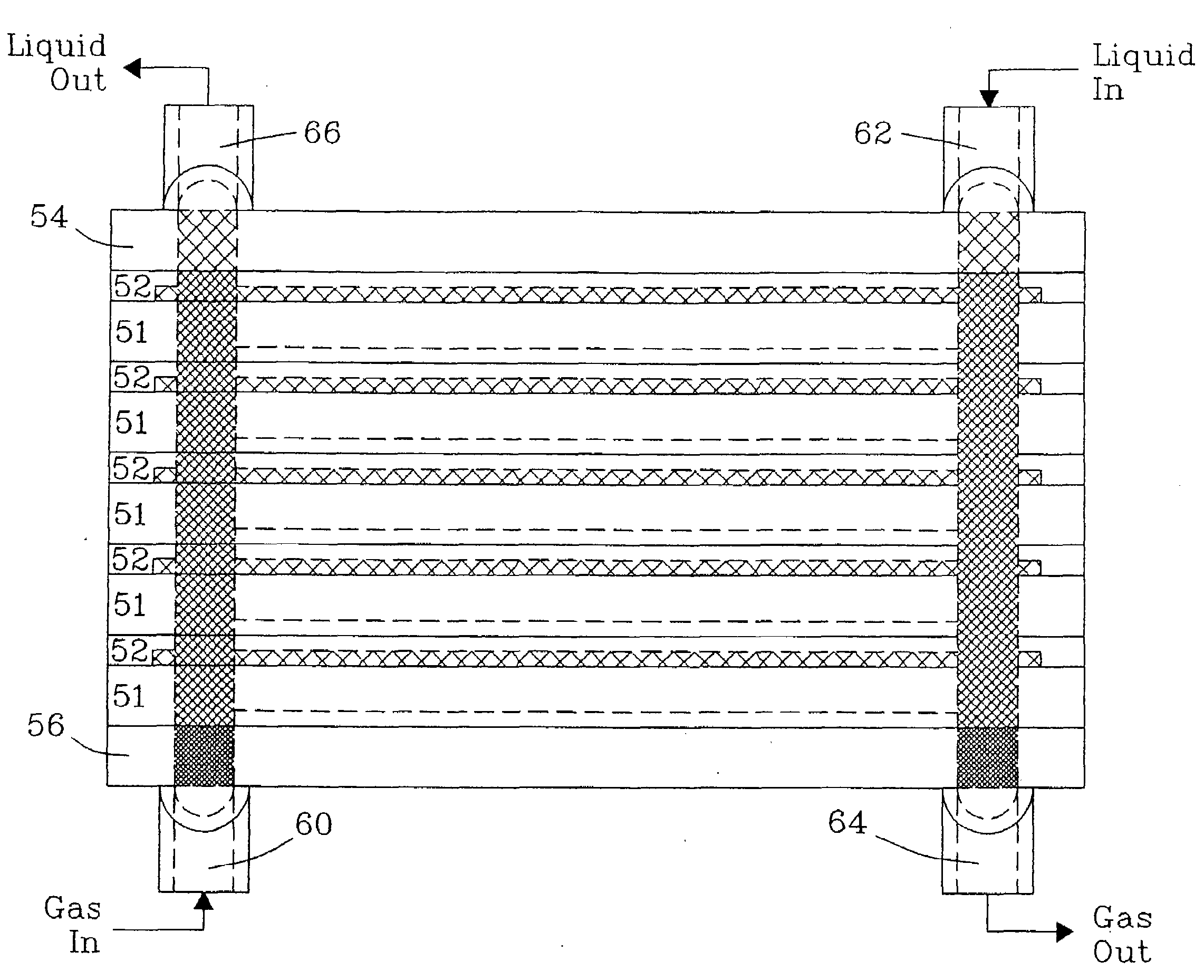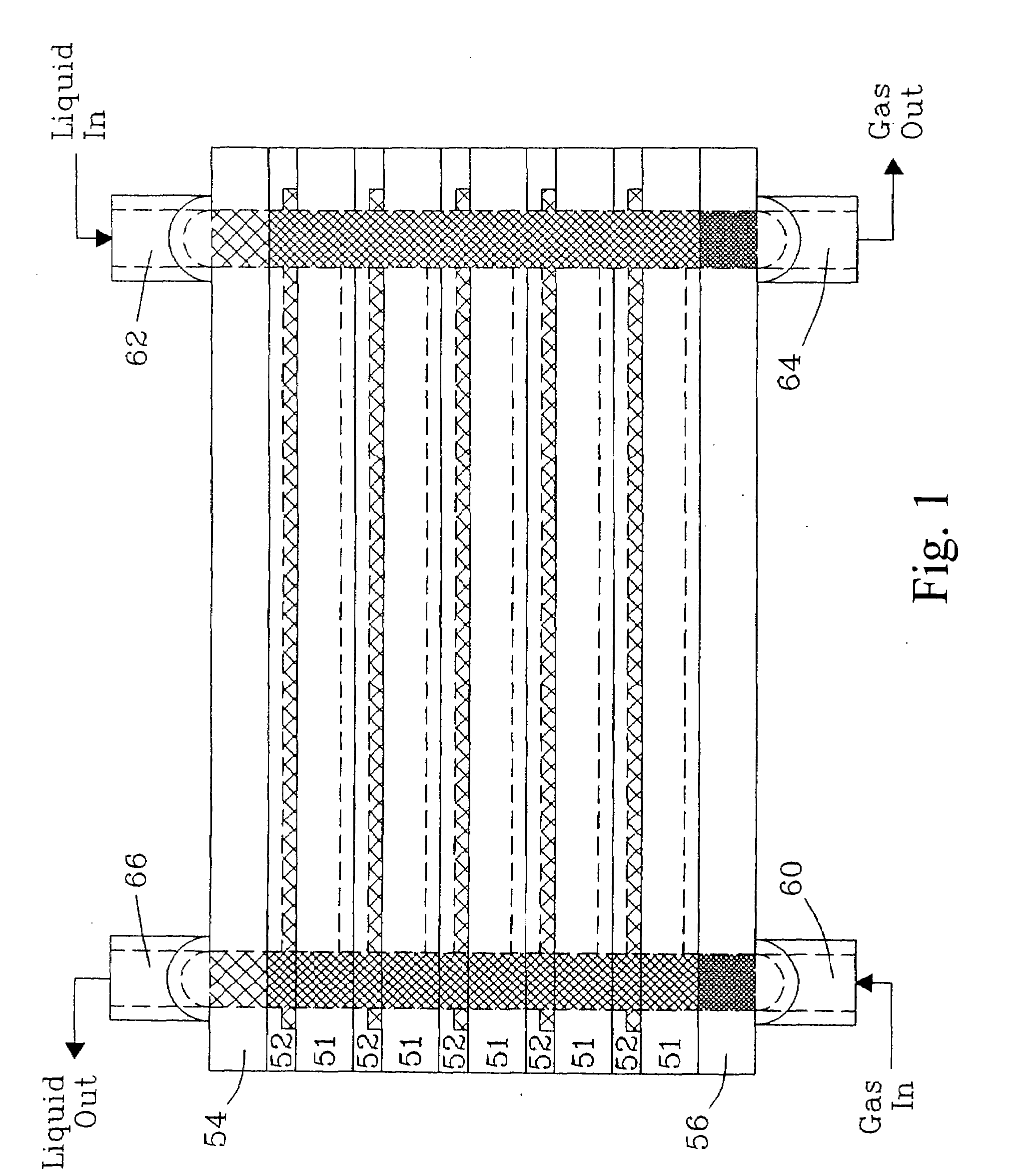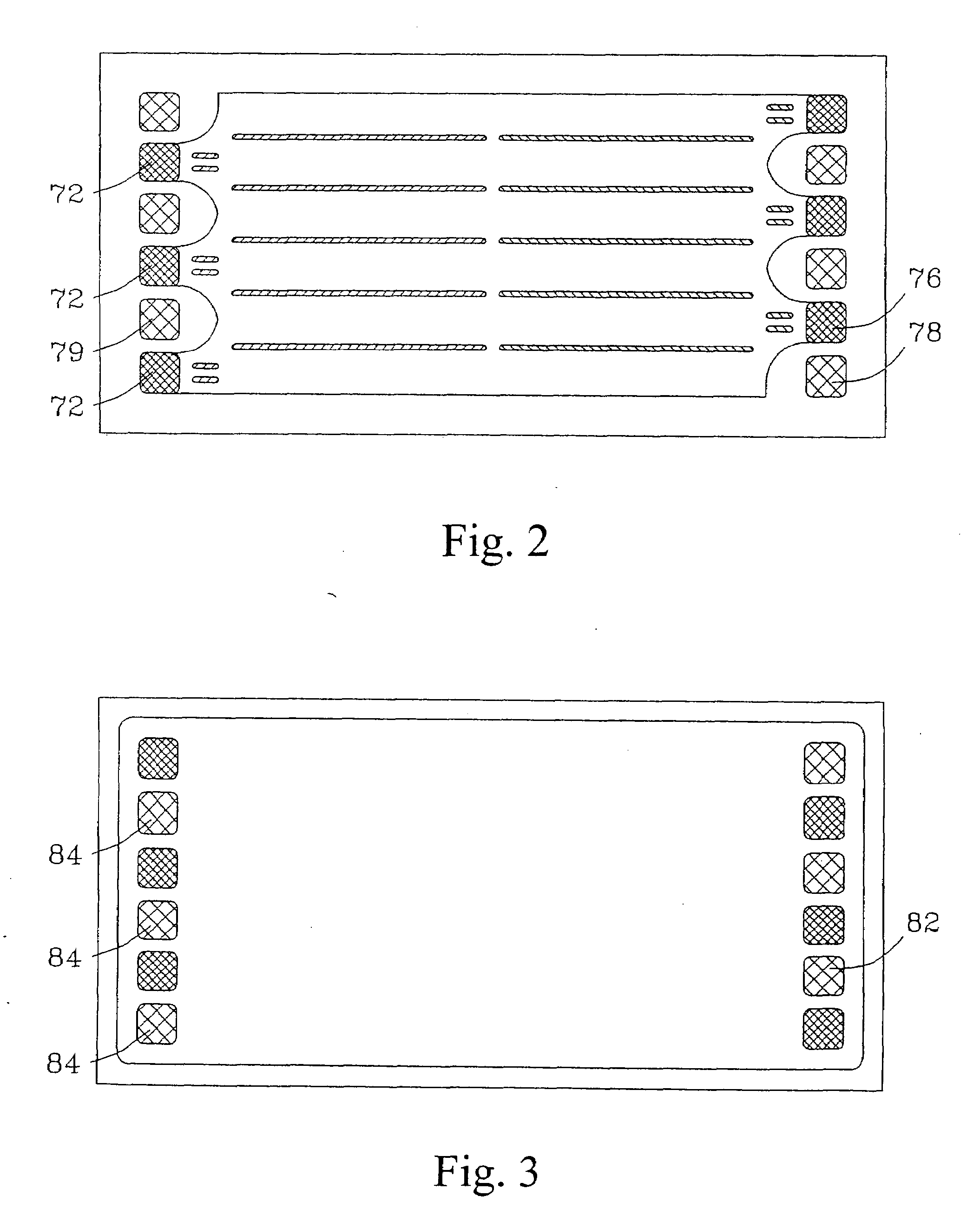Mixing in Wicking Structures and the Use of Enhanced Mixing Within Wicks in Microchannel Devices
a microchannel device and wicking technology, applied in the field of mixing in wicking structures and the use of enhanced mixing within wicks in microchannel devices, can solve the problems of no prior art incorporating a static mixer within a wick, gas escaping through the wick, slow mass transfer, etc., and achieves high heat transfer rate, high efficiency, and durability.
- Summary
- Abstract
- Description
- Claims
- Application Information
AI Technical Summary
Benefits of technology
Problems solved by technology
Method used
Image
Examples
Embodiment Construction
[0050]Devices containing a wick can be made of metals, plastics, ceramic or composite materials. Metal shims (for making a laminated device) can be made by etching; conventional cutting, grinding and machining; electrical discharge machining (EDM); laser machining; stamping or coining; extrusion; molding techniques; or deposition techniques, such as rapid-prototyping, chemical vapor deposition, or electro deposition. Plastic shims can be made using the same techniques or by conventional plastic forming techniques, including injection molding, hot embossing, stamping, casting, and other molding techniques. Ceramic shims could be made using techniques well known for fabricating ceramic parts, including those used in fabricating solid oxide fuel cell elements. The shim material facing the gas channel can be made hydrophobic through coatings, treatment or by the choice of material. The shims can be stacked with wicks installed within the liquid flow channel, either held in loosely by th...
PUM
 Login to View More
Login to View More Abstract
Description
Claims
Application Information
 Login to View More
Login to View More - R&D
- Intellectual Property
- Life Sciences
- Materials
- Tech Scout
- Unparalleled Data Quality
- Higher Quality Content
- 60% Fewer Hallucinations
Browse by: Latest US Patents, China's latest patents, Technical Efficacy Thesaurus, Application Domain, Technology Topic, Popular Technical Reports.
© 2025 PatSnap. All rights reserved.Legal|Privacy policy|Modern Slavery Act Transparency Statement|Sitemap|About US| Contact US: help@patsnap.com



